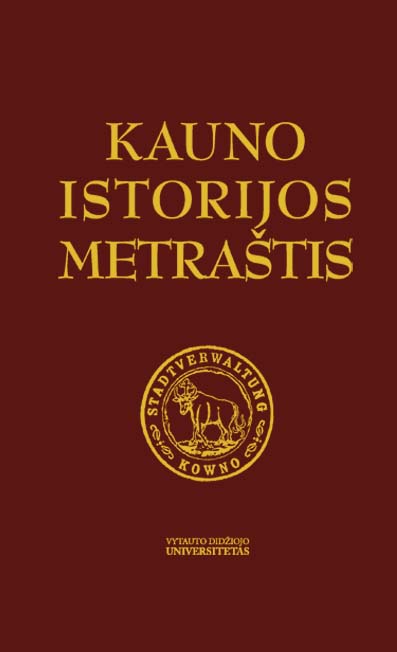Sociokultūrinis lietuvinimas Kauno įguloje 1919–1940 m.
Socio-Cultural Lithuanization in Kaunas Garrison in 1919–1940
Author(s): Mindaugas BalkusSubject(s): History, Cultural history, Military history, Social history, History of Education, Interwar Period (1920 - 1939)
Published by: Vytauto Didžiojo Universitetas
Keywords: Army; Socio-cultural Lithuanization; Interwar; Kaunas; Education;
Summary/Abstract: The present article discusses socio-cultural Lithuanization of soldiers in Kaunas Garrison in 1919–1940. It focuses on teaching the Lithuanian language, Lithuanian history and geography in the army units as well as the cultural events which were organised in Kaunas Garrison (e.g. lectures, festivals, etc.) to promote Lithuanian national culture. In the Lithuanian army units in Kaunas, the Lithuanian language, history and geography were started to be taught systematically since 1920 when the first education programmes for soldiers were prepared. The army units reached sufficiently good results of the Lithuanian language. For instance, from the recruits who came to the 2nd and 5th infantry, 1st hussar and 3rd artillery regiments, there were only 6,7%, 8,9%, 2,4%, and 4% of analphabets, respectively. After finishing the education course for soldiers, there were only five analphabets (1,8%) in the infantry regiment. Reading various nationally-oriented sources and books written by Lithuanian authors (there were small libraries in the army units) as well as learning Lithuanian-centered history and geography of the country, soldiers got introduced with the national Lithuanian culture and underwent certain influences of socio-cultural Lithuanization. Various cultural events organized in Kaunas Garrison also had influence on soldiers’ socio-cultural Lithuanization. They had lectures on the history of Lithuanian national movement and ethno-cultural features of the Lithuanian nation; state and national festivals (February 16, September 8, etc.) were celebrated. Their celebration included much cultural national symbolism (e.g. singing the state anthem). Soldiers’ visits to the War Museum, which combined the motives of nationalism and struggle for independence, also had socio-cultural influence of Lithuanization.
Journal: Kauno istorijos metraštis
- Issue Year: 2016
- Issue No: 16
- Page Range: 85-102
- Page Count: 18
- Language: Lithuanian

